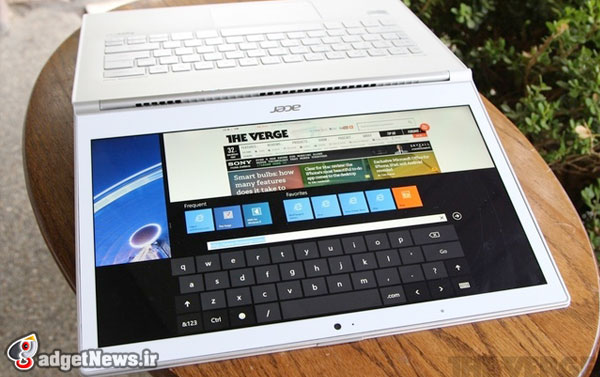
سرفیس پرو، تینک پد هلیکس، توشیبا Kirabook و دل XPS 12 همگی دستگاه های رده بالای مبتنی بر ویندوز 8 هستند که از یک مشخصه رنج می برند: حتی با وجود نمایشگرهایی با رزولوشن زیاد، رابط کاربری بیش از حد کوچک است. خواندن متن ها سخت است و لمس کردن دکمه های لمسی، مشکل تر. این مشکل با ارائه ویندوز 8.1 به دست فراموشی سپرده خواهد شد.
به نظر می رسد مایکروسافت نیز مشابه استراتژی رتینای اپل را در پیش گرفته. ینسن هریس، مدیر تیم تجربه کاربری ویندوز می گوید که مقیاس ویندوز 8.1 را می توان تا 200 درصد افزایش داد که این در مقایسه با 150 درصد نسخه های قبلی، چشمگیر تر است و به سازگاری آن را نمایشگرهایی که رزولوشن خیلی بالایی دارند کمک می کند.
این افزایش مقیاس شامل حال صفحه استارت و محیط دسکتاپ می شود و مایکروسافت با بهینه سازی ویندوز اکسپلورر و سایر اپلیکیشن های اصلی، آنها را هم مناسب این وضعیت خواهد کرد.
همچنین صفحه کلید لمسی نیز مناسب با تغییر مقیاس بزرگ خواهد شد تا کار با آن بر روی نمایشگرهایی که رزولوشن زیادی دارند، راحت باشد.
منبع : en.gadgetnews
Windows 8.1 will finally add Retina-like display support
The Surface Pro, Lenovo ThinkPad Helix, Toshiba Kirabook, Dell XPS 12, and many other high-end Windows 8 machines suffer from the same nasty flaw: even as their high-resolution touchscreens are crisp and beautiful, the user interface is often too small. Text can be hard to read and touchscreen buttons extremely difficult to touch. That could all change soon, though. Windows 8.1 will add support for high-density displays, finally scaling the user interface to these increasingly high-quality devices.
And to get there, Microsoft appears to have adopted the same strategy that Apple used with its Retina display-equipped iPad, iPhone and MacBook Pro. According to Microsoft's Jensen Harris, ""Text might not be as sharp on apps that aren't ready."" director of the Windows User Experience team, the Windows 8.1 will scale to 200 percent, compared to the 150 percent increase that previous versions of Windows allowed. That goes for both the Windows 8.1 Start Screen and the desktop mode, with Microsoft updating Windows Explorer and other first-party apps to make them look correct. Much like with Apple's solution, Harris expects there to be a transition process as developers update their apps to take advantage of the higher resolution, but Windows 8.1 will still be able to enlarge their pixels in the meanwhile.
As for the virtual keyboard, which has been a pain point in several of our touchscreen laptop (and desktop) reviews, Harris says that it too will be sized appropriately for the screen size and resolution of high-density displays. You won't be able to resize the keyboard yourself, though: the manufacturer — not the user — will adjust it to match the size of fingers on the screen.
Another part of high-res support is a tweak to how multiple monitors are handled. On stage at the Build keynote today, Microsoft explained that each monitor will support its own scaling factor — a feature we've seen before in OS X. In the past, Windows used the same scaling mode from the primary display on the secondary display, and if you were using a high-res laptop windows and text would be comically large on external monitors. Thankfully, that's not the case anymore with Windows 8.1.
It's strange to see Microsoft only manage to come up with the same basic solution as Apple after publicly stating a desire to support high density displays months before Windows 8 even launched, but at this point we're happy to see any support at all just so long as we can see what we're doing.
 گجت نیوز آخرین اخبار تکنولوژی، علم و خودرو
گجت نیوز آخرین اخبار تکنولوژی، علم و خودرو 





